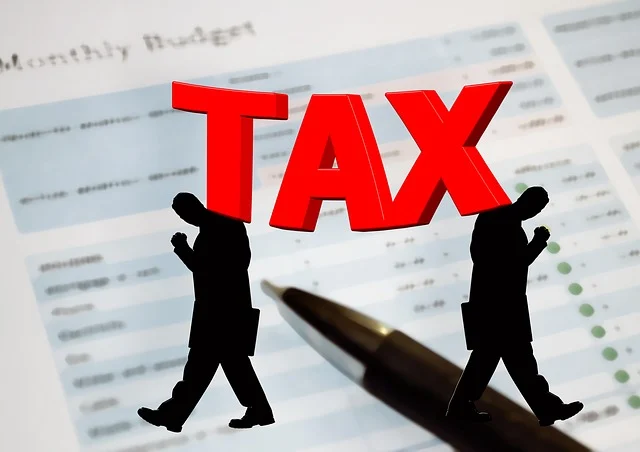Understanding the Dutch Tax System: A Comprehensive Guide

The Dutch tax system is known for its complexity but also for its efficiency and fairness. It is designed to fund public services, infrastructure, and social security while encouraging economic growth and innovation. For residents, expatriates, and businesses operating in the Netherlands, understanding the tax system is crucial for compliance and financial planning. This article provides a detailed overview of the Dutch tax system, covering income tax, corporate tax, value-added tax (VAT), and other key aspects.
1. Income Tax (Inkomstenbelasting)
Overview
Income tax in the Netherlands is progressive, meaning that the tax rate increases as income rises. It is levied on both residents and non-residents, although the scope of taxation differs between the two.
Tax Residency
- Residents: Taxed on worldwide income.
- Non-Residents: Taxed only on income derived from Dutch sources, such as employment or business activities in the Netherlands.
Tax Brackets (2023)
The Dutch income tax system has three brackets:
- Box 1 (Income from Work and Home):
- Up to €73,031: 36.93%
- Above €73,031: 49.50%
- Box 2 (Income from Substantial Interest):
- Flat rate of 26.9% on dividends and capital gains from substantial shareholdings (5% or more in a company).
- Box 3 (Income from Savings and Investments):
- A flat rate of 32% is applied to a notional return on savings and investments, based on a progressive scale depending on the total value of assets.
Deductions and Allowances
- General Tax Credit (Algemene Heffingskorting): A reduction in tax liability available to all taxpayers.
- Employment Tax Credit (Arbeidskorting): A credit for income from employment.
- Mortgage Interest Deduction: Interest on mortgages for primary residences is deductible under certain conditions.
- Healthcare Costs: Medical expenses exceeding a certain threshold can be deducted.
Filing and Payment
- Filing Deadline: April 30 of the following year.
- Payment: Taxes are typically withheld by employers (pay-as-you-earn system), but additional payments or refunds may be required after filing.
2. Corporate Tax (Vennootschapsbelasting)
Overview
Corporate tax is levied on the profits of companies and other legal entities resident in the Netherlands. Non-resident companies are taxed on income derived from Dutch sources.
Tax Rates (2023)
- Up to €200,000: 19%
- Above €200,000: 25.8%
Key Features
- Participation Exemption: Dividends and capital gains from qualifying shareholdings (5% or more) are exempt from corporate tax.
- Innovation Box: A reduced tax rate of 9% applies to profits derived from self-developed intangible assets (e.g., patents).
- Loss Relief: Losses can be carried forward for nine years and carried back for one year.
Filing and Payment
- Filing Deadline: Five months after the end of the financial year.
- Payment: Advance payments are required, with final settlement upon filing.
3. Value-Added Tax (BTW)
Overview
VAT, known as BTW (Belasting over de Toegevoegde Waarde), is a consumption tax levied on goods and services. The standard rate is 21%, with reduced rates of 9% and 0% applying to certain goods and services.
Rates (2023)
- Standard Rate: 21% (most goods and services).
- Reduced Rate: 9% (e.g., food, books, medicines, public transport).
- Zero Rate: 0% (e.g., exports, international transport).
Registration
Businesses with taxable turnover exceeding €20,000 must register for VAT.
Filing and Payment
- Filing: Quarterly or monthly, depending on turnover.
- Payment: Due within one month after the end of the reporting period.
4. Wage Tax (Loonbelasting)
Overview
Wage tax is a withholding tax on employment income, collected by employers and remitted to the tax authorities. It is part of the income tax system but is administered separately.
Rates
The same progressive rates as Box 1 income tax apply.
Employer Responsibilities
- Withhold wage tax and social security contributions from employees’ salaries.
- File monthly wage tax returns and make payments to the tax authorities.
5. Social Security Contributions (Sociale Verzekeringspremies)
Overview
Social security contributions fund various social benefits, including healthcare, unemployment, and pensions. Both employers and employees contribute.
Rates (2023)
- Employee Contributions: Approximately 27.65% of gross salary.
- Employer Contributions: Approximately 20–25% of gross salary, depending on the specific scheme.
Key Schemes
- AOW (State Pension): Funded by contributions from working individuals to provide pensions for retirees.
- ZW (Sickness Benefits): Provides income support during illness.
- WW (Unemployment Benefits): Offers financial assistance to unemployed individuals.
6. Wealth Tax (Vermogensrendementsheffing)
Overview
Wealth tax is levied on the net value of savings and investments (Box 3). It is based on a notional return rather than actual income.
Rates (2023)
- Notional Return: 6.17% (savings) and 5.53% (investments).
- Tax Rate: 32% of the notional return.
Exemptions
- Tax-Free Allowance: €57,000 (single) or €114,000 (joint).
7. Inheritance and Gift Tax (Erf- en Schenkbelasting)
Overview
Inheritance and gift taxes are levied on the transfer of assets, either upon death (inheritance) or as a gift during one’s lifetime.
Rates (2023)
- Inheritance Tax: Rates range from 10% to 40%, depending on the relationship to the deceased and the value of the inheritance.
- Gift Tax: Rates range from 10% to 40%, with higher rates for non-relatives.
Exemptions
- Annual Gift Tax Exemption: €2,418 (children) and €2,274 (others).
- Lifetime Gift Tax Exemption: €27,231 (children) and €2,274 (others).
8. Other Taxes
Real Estate Tax (Onroerendezaakbelasting, OZB)
Levied by municipalities on the value of real estate properties.
Motor Vehicle Tax (Motorrijtuigenbelasting, MRB)
An annual tax on vehicle ownership, based on factors like weight, fuel type, and emissions.
Environmental Taxes
Includes taxes on energy, waste, and water usage, aimed at promoting sustainability.




